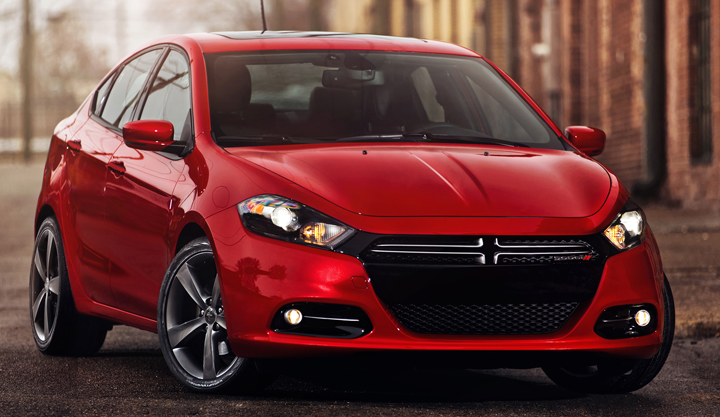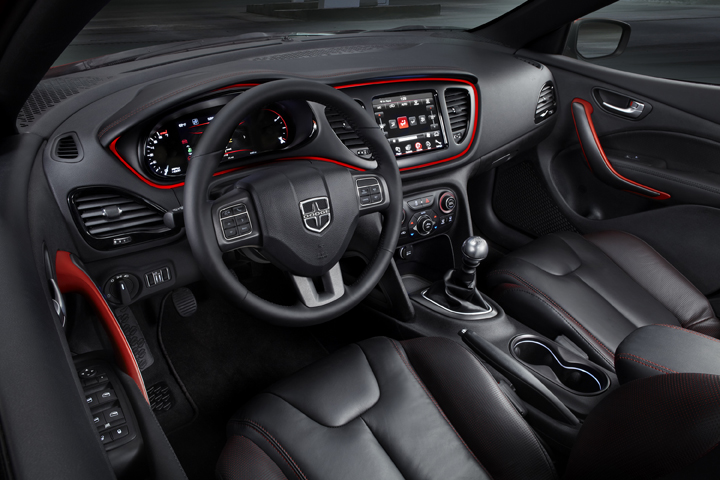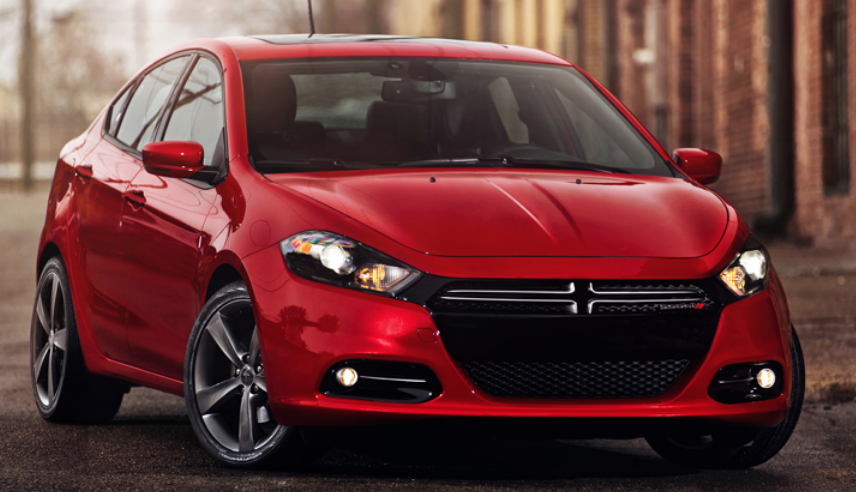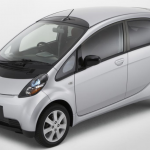
Recently, I went on a small diatribe about how Hyundai messed up the styling of the 2013 Genesis Coupe so badly that it overshadows the very meaningful improvements under its skin. Now I’d like to turn the table a bit and talk about a car that has a few faults but whose overall design and execution are so good that I am more than willing to open my wallet to put one in my driveway.
Style Matters: Why I No Longer Want a Genesis Coupe
Dodge Dart Styling
Last December, we were invited to take a look at the 2013 Dodge Dart before it made its world debut at the 2012 Detroit Auto Show. Its importance couldn’t be overstated. While the public generally liked the Dodge Caliber more than the press did, that car desperately needed replacing. It was slow, noisy, hard to see out of, and had more plastic in it than a Hollywood starlet.
Dart was going to change all that. It looked good. Darn good. Inside and out. The aggressive front end was also built with a purpose beyond maintaining brand identity. It housed “active grille shutters” that open and close automatically depending on vehicle speed. Around town, the shutters stay open to help cool the engine; on the highway, they close, allowing air to flow more freely around the car. Slipperier aerodynamics would result in a quieter cabin and fuel-economy improvements.
While Caliber’s cabin was a pop-up foul ball nabbed by the catcher, Chrysler knocked Dart’s cabin out of the park and into the upper deck. Instead of hollow dashboard plastic comprised of at least three mismatched colors, Dart adopted plush, padded surfaces, highlighted by Nappa-brand leather upholstery on the top-line Limited trim level. Nappa leather is the kind of stuff you find on BMWs, no joke. The tastefully modern dashboard could be outfitted with contrasting colors around the instrument binnacle and central touchscreen. One of those colors was yellow, which I’ll admit was a bit odd, but the red and white looked pretty cool. An analog tachometer and fuel gauge flanked a 7-inch center display that drivers could configure to their taste with navigation or fuel-economy data. Traditionalists could set a simulated analog speedometer.
Now I won’t say I was as head over heels with the Dart as I was with the Genesis Coupe when it first came out, but this was a very impressive showing from Dodge. When I finally got to take one on the road, it provided a driving experience to back up those looks . . . for the most part.
Did Dodge Hit the Bullseye with the Dart?
The example I drove was a well-equipped Limited model with Chrysler’s new 160-horsepower 2.0-liter 4-cylinder engine and 6-speed automatic transmission. While infinitely smoother and peppier than the Caliber’s awful drivetrains, Dart still didn’t feel as peppy as the similarly powerful Ford Focus or even the lower-rated Chevrolet Cruze turbo. I’m hoping the Dart’s soon-to-be available 1.4-liter turbo and 2.4-liter 4-cylinder engines will rectify this, especially since both provide significantly more torque than the base 2.0. The automatic transmission is a standout, providing much greater smoothness and faster response than anything in the class, even the Ford Focus’ dual-clutch automated manual.
Dodge complements Dart’s high-end appearance with some unexpected high-end features. On the Limited, you can order a heated steering wheel, blind-spot alert, rear-obstacle detection, and rear cross-traffic alert. The best part is you can have this stuff and still keep the sticker price below $25,000. Only the Ford Focus comes close to offering this level of premium content, and you’d have to spend more money to get it.
Two things annoy me about the Dart, though. First and foremost is the ride. Sharp bumps resonate through the cabin more on this car than on its rivals from Chevrolet and Ford. It’s far from unlivable, but I expected a bit better given Dart’s Italian roots (it borrows its platform from the European-market Alfa Romeo Giulietta).
Second, and less importantly, the optional navigation system bugs me. Granted, it bugs me in just about every Chrysler vehicle so equipped. It’s slow to draw the map and respond to user inputs. The “auto zoom” feature that dynamically adjusts how far the map is zoomed in or out based on vehicle speed really chaps my hide. I spent the better part of 10 minutes going through the menu trying to disable this nuisance but was unsuccessful. (If someone knows how to turn auto zoom off, please post a comment here). The system also posts the speed limit (for most main roads and highways) and vehicle speed on the main map display. If you exceed the speed limit by even 1 mph, even accidentally, the readout of your speed changes to an annoying bright red color. Again, I found no way of disabling this or increasing the buffer for altering the color. Mercifully, the navigation system is a standalone option. Take the $495 you would spend on this option and either put it toward your down payment or select the surprisingly good Alpine audio system (which is the same price).
In the end, this Dodge doesn’t feel as peppy nor does it ride as well as its rivals. Based on our testing, Dart’s fuel economy doesn’t quite stack up to the solid ratings it gets from the EPA. Our recent 2.0-liter/automatic-transmission test car averaged just 28.4 mpg with highway-biased driving. Still, this is a quiet, very refined small car. Superb execution on the exterior and interior design, along with aggressive pricing, puts Dart in a position to succeed where the 2013 Genesis Coupe fails.

Listen to the very entertaining Consumer Guide Car Stuff Podcast
Dodge Dart Styling



